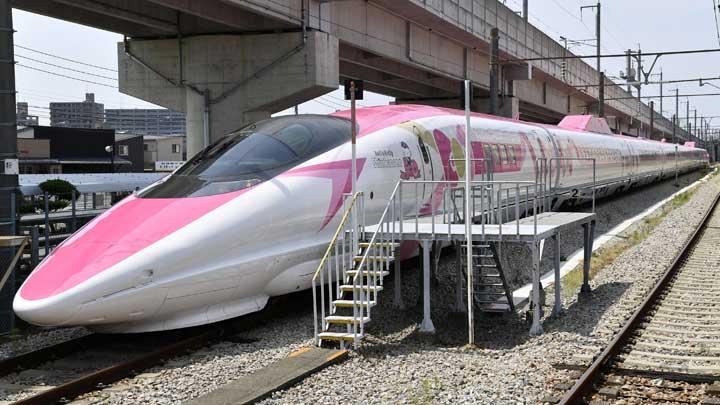In 2024, Japan celebrates 60 years of the Shinkansen, the iconic high-speed train that revolutionized travel both in Japan and around the world. First introduced in 1964, the Shinkansen has become synonymous with speed, precision, and innovation. This article explores the history and impact of the Shinkansen over six decades.
1. The Birth of Shinkansen in 1964
The Shinkansen, also known as the “bullet train,” made its debut in 1964, connecting Tokyo and Osaka with a groundbreaking speed of 210 km/h (130 mph). The introduction of the Shinkansen marked a new era in transportation, drastically reducing travel time between major cities in Japan and boosting the economy. It was a symbol of technological advancement and Japan’s post-war recovery.
2. How Shinkansen Changed Japanese Travel
The Shinkansen’s development not only shortened travel times but also made rail travel more comfortable and efficient. With its sleek design, punctual schedules, and high safety standards, the Shinkansen became a popular choice for both business and leisure travelers. Over the years, the trains have evolved to offer various services and amenities, maintaining a high standard of passenger comfort.
3. Shinkansen’s Technological Advancements
Shinkansen trains have been at the forefront of rail technology, constantly evolving over the past six decades. Early models were replaced by faster, more energy-efficient versions, with speeds now reaching up to 320 km/h (200 mph). Innovations in aerodynamics, noise reduction, and earthquake-resistant technology have kept the Shinkansen competitive and environmentally friendly.
4. Economic and Cultural Impact of Shinkansen
The Shinkansen has had a profound impact on Japan’s economy, enabling greater connectivity between regions, promoting tourism, and boosting local businesses. Its success has also inspired other countries to develop high-speed rail networks, with the Shinkansen serving as a model for efficiency and safety. Additionally, the Shinkansen has become an integral part of Japanese culture, often seen as a symbol of national pride.
5. Looking Ahead: The Future of Shinkansen
As the Shinkansen celebrates its 60th anniversary, the future looks bright with ongoing innovations. New high-speed lines, such as the N700S model, are being developed to further enhance speed, comfort, and sustainability. Japan also plans to expand the Shinkansen network internationally, with future projects in countries like the United States and the UK, bringing the iconic bullet train experience to more people around the world.
The Shinkansen’s 60-year journey is a testament to Japan’s commitment to innovation, efficiency, and cultural pride. From its humble beginnings in 1964 to its role as a global icon, the Shinkansen has transformed transportation and continues to shape the future of high-speed travel.

